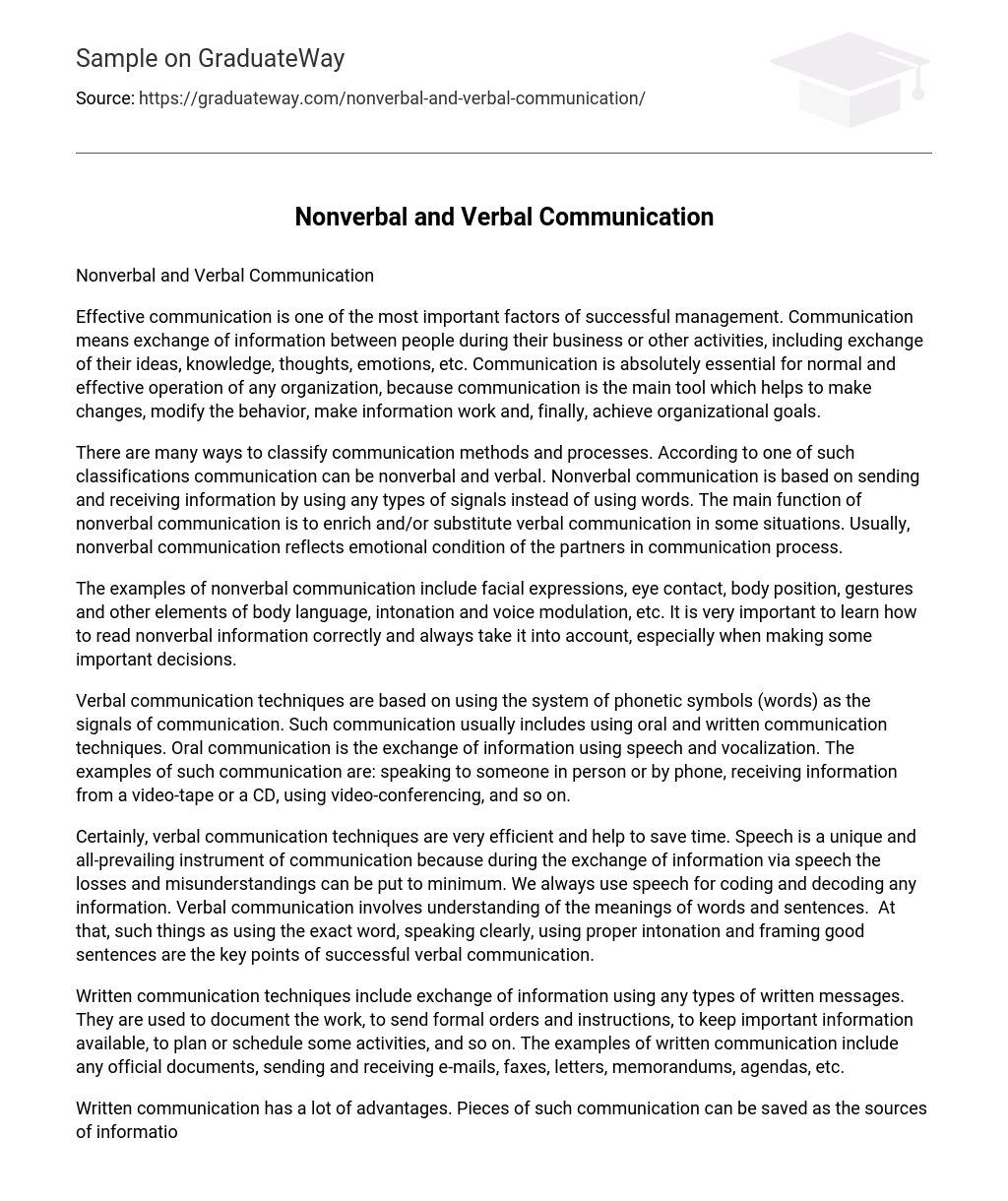Effective communication is one of the most important factors of successful management. Communication means exchange of information between people during their business or other activities, including exchange of their ideas, knowledge, thoughts, emotions, etc. Communication is absolutely essential for normal and effective operation of any organization, because communication is the main tool which helps to make changes, modify the behavior, make information work and, finally, achieve organizational goals.
There are many ways to classify communication methods and processes. According to one of such classifications communication can be nonverbal and verbal. Nonverbal communication is based on sending and receiving information by using any types of signals instead of using words. The main function of nonverbal communication is to enrich and/or substitute verbal communication in some situations. Usually, nonverbal communication reflects emotional condition of the partners in communication process.
The examples of nonverbal communication include facial expressions, eye contact, body position, gestures and other elements of body language, intonation and voice modulation, etc. It is very important to learn how to read nonverbal information correctly and always take it into account, especially when making some important decisions.
Verbal communication techniques are based on using the system of phonetic symbols (words) as the signals of communication. Such communication usually includes using oral and written communication techniques. Oral communication is the exchange of information using speech and vocalization. The examples of such communication are: speaking to someone in person or by phone, receiving information from a video-tape or a CD, using video-conferencing, and so on.
Certainly, verbal communication techniques are very efficient and help to save time. Speech is a unique and all-prevailing instrument of communication because during the exchange of information via speech the losses and misunderstandings can be put to minimum. We always use speech for coding and decoding any information. Verbal communication involves understanding of the meanings of words and sentences. At that, such things as using the exact word, speaking clearly, using proper intonation and framing good sentences are the key points of successful verbal communication.
Written communication techniques include exchange of information using any types of written messages. They are used to document the work, to send formal orders and instructions, to keep important information available, to plan or schedule some activities, and so on. The examples of written communication include any official documents, sending and receiving e-mails, faxes, letters, memorandums, agendas, etc.
Written communication has a lot of advantages. Pieces of such communication can be saved as the sources of information and references. Besides, they are usually clearer and more thoroughly formulated than oral messages are. In addition, sometimes they may save time and money. However, there are certain disadvantages of using written communication techniques. Occasionally, written messages can have mistakes and it is harder to correct them than in cases of using oral communication.
In conclusion, it is necessary to mention that, undoubtedly, verbal communication is unique, effective and irreplaceable way to exchange information, but this method of communication gains some special meaning only when it is used along with some nonverbal techniques and models. That is why it is crucial for successful communication to involve several channels, both verbal and nonverbal, in order to receive or send some information.
Works Cited:
· Verbal and Nonverbal Communication. University of San Francisco. College of Professional Studies. 2 Apr. 2004. 23 Nov. 2007 <http://www.cps.usfca.edu/ob/studenthandbooks/321handbook/verbal.htm>.





